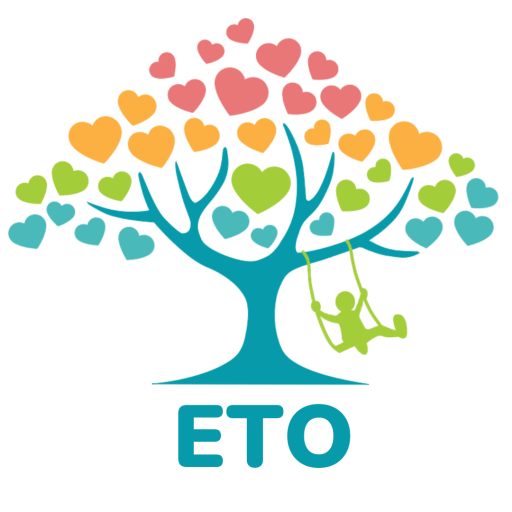Social and emotional development is crucial and influences many aspects of a child’s interpersonal and intrapersonal experiences. Our emotional development allows us to recognise, express and manage our emotions, which in turn shapes our behaviours, allowing us to achieve our goals and interact with others effectively. Likewise, our social development allows us to interact, form positive relationships, and work with others, as well as to show understanding and empathy.
Developing these skills is essential in supporting wellbeing and positive mental health, so below we’ve listed 5 tips on how to support your child’s social-emotional development and why!
1. Express Feelings at Home
As children develop, they experience a range of emotions and become aware of how their moods change and how other people’s feelings change. Children are very observant, and studies have found that children who come from families where love and care for one another is not expressed (verbally or physically) are generally more likely to suppress their feelings or express them in inappropriate ways – to their detriment.
So, it is important kids are observing members of their family and those at home talking freely about their emotions and sharing their feelings appropriately. By doing this, they not only learn how to share their feelings and acquire the vocabulary to do so, but learn that both positive and negative feelings are natural reactions to life, and it’s normal for our feelings to go up and down. This knowledge helps kids gain control over their feelings. They learn how to manage emotions effectively, rather than keeping them bottled up inside which can potentially lead to serious emotional problems.
2. Bond
Social-emotional skills develop early in life beginning with an infant’s bond to their parents, and continue as they grow and form relationships with other family members and caregivers.
From birth, babies enjoy the company of others and a close attachment with their ‘special person’ who they depend on. According to researchers, most children have this kind of relationship, referred to as a ‘secure attachment’ with their parents. Basically, the parent is seen as a secure base from which they can explore the world. These children are more likely to develop social competence, as they have positive models of relationships to work with, and enter future social interactions with a basic sense of trust due to this experience with their primary caregiver.
Children who do not have this secure attachment with a parent are less likely to regulate their emotions and build positive relationships in the future, compared to those who do.
3. Model appropriate behaviours when interacting with others
Very young children observe and copy the behaviours they see around them and use this as they begin interactions with others.
This begins from infancy, when babies imitate facial expressions and sounds made by their carers. As they develop, they make lots of progress in regards to their interaction with others, and learn how to react to other’s emotions influenced by how they see those around them reacting.
Parents can directly teach social skills by modelling and providing opportunities for their child to rehearse and practise new skills. Parents can encourage and praise the child for successfully using a new social skill e.g. asking a question or using a greeting.
4. Encourage imaginative/pretend play
Involvement in imaginative/pretend play provides opportunities for children to share and try out their feelings. From about 18 -24 months, kids begin to partake in simple pretend play games, imitating what adults or other kids are doing. It can be quite literal and depends on actual objects e.g. using a spoon to feed a teddy bear, before progressing around 3 years +, to creating and acting as different characters or using puppets to express emotions and behaviours.
This type of play not only helps kids deal with and understand emotions, but provides a way to interact with others in a non-threatening way. They can experience difficult emotions and practise expressing and regulating feelings appropriately, as well as testing out social skills they’ve observed.
5. Don’t push kids to express feelings
Whilst sharing and expressing emotions is important, pushing kids to share their feelings is counterproductive. Rather, it is important to model emotional literacy and to give kids the opportunity to express feelings in their own time or way (especially for kids who may have been told to ‘be strong’ and feel seeking help is a weakness).
Games and activities that include turn-taking or creating shared stories together can help explore emotions, whilst allowing kids to understand that other people have emotions and learn that it’s okay to share them. Tools like feeling charts, images, and age-appropriate words to describe feelings can be helpful to begin these kinds of conversations.
For older kids, using analogies can be helpful to address feelings. For example, talking about blowing up a balloon and if you continue to blow it up it will stretch until it pops is a useful way of discussing why we shouldn’t bottle up emotions until they overwhelm us.
References:
Bloomquist, M. L. (2013;2012;). Skills training for struggling kids: Promoting your child's behavioral, emotional, academic, and social development. US: Guilford Publications Inc. M.U.A.
Case-Smith, J. (2013). Systematic review of interventions to promote social-emotional development in young children with or at risk for disability. American Journal of Occupational Therapy, 67(4), 395-404. doi:10.5014/ajot.2013.004713
Sheppy, S. (2009;2012;). Personal, social and emotional development in the early years foundation stage. New York;London;: Routledge. doi:10.4324/9780203609521
van der Voort, A., Juffer, F., & J. Bakermans-Kranenburg, M. (2014). Sensitive parenting is the foundation for secure attachment relationships and positive social-emotional development of children. Journal of Children's Services, 9(2), 165-176. doi:10.1108/JCS-12-2013-0038

